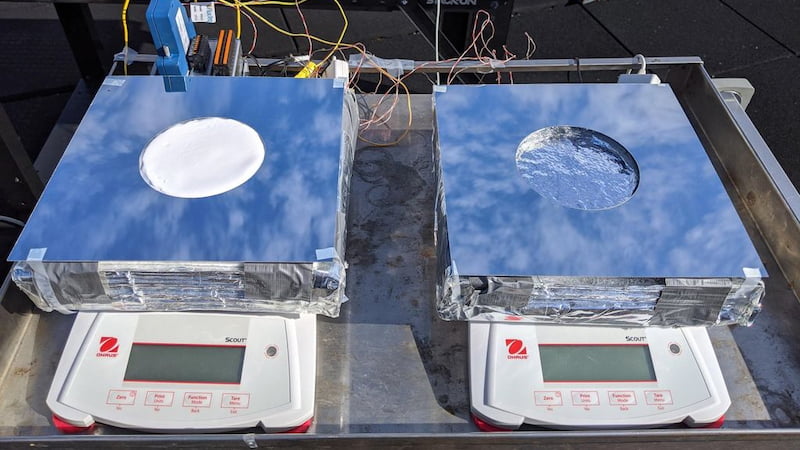
Researchers from the Massachusetts Institute of Technology (MIT) have developed a cooling system that does not require electricity. For the system to work, only water needs to be refilled.
If we look into the future, more and more households will probably need air conditioning due to global warming. The problem with this is that the devices eat up a lot of electricity and that the power grid will already be loaded by electric vehicles anyway. A new discovery from the Massachusetts Institute of Technology (MIT) could counteract this.
We are talking about a cooling system that does not require any electricity and can therefore also be used in remote locations. To do this, researchers have made use of a passive cooling method. Radiant cooling, evaporative cooling and thermal insulation are all available in one package. First results appear promising.
Researchers are developing a cooling system that does not require electricity
In the tests, the new system was able to cool rooms by up to 9.3 degrees Celsius. This is sufficient, among other things, to ensure the safety of food storage facilities in remote hot areas, for example. Because these areas are in places where there is hardly any food available anyway.
The system can also be combined with existing air conditioning systems. The consumption of the system drops significantly. The reason is that the new system can cool down the condenser of the air conditioning system, thus significantly reducing energy consumption. This should work without any problems in both wet and dry areas.
Cooling system with three different layers
But how does the system work? The researchers installed three different layers in the device. The top one consists of so-called aerogel. It has a spongy structure and allows water to evaporate or infrared light to emit.
Below this, a hydrogel forms the second layer. This gel is also similar to a sponge, except the holes are filled with water. In order to keep the layer always wet, water must be added every four days in dry areas and every month in wet areas.
Like a refrigerator without electricity
In the bottom layer there is a kind of mirror. This reflects incoming sunlight and thus reduces heat development on the device. All three layers allow the optimal dissipation of excess heat. Commercial use is still a long time coming.
The airgel used is comparatively expensive, so the scientists first want to find a cheaper material. Because the cooling system will probably only be well received if the price is right.
Also interesting:
Source: https://www.basicthinking.de/blog/2022/10/02/kuehlsystem-kuehlschrank-ohne-strom/


